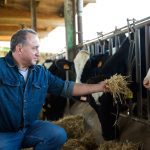
Tag Archives greenhouse gas emissions

Farmers and industry say government’s emissions plans at odds with export goals
Groups ask for goals to be based on emissions per bushel but this may not reduce emissions long-term

Examining the burning nitrogen questions
If you’re confused about nitrogen emissions, you’re not alone. How can the non-scientists among us cut through the noise?
Grain groups call for intensity goals, not absolute emissions
The two groups call for support for 4R nutrient management practices in submissions to the federal government

NFU calls for agriculture to ‘scale back’ nitrogen use, export goals
System transformation, not tweaking, is needed to mitigate climate change, says new report
EMISSIONS System transformation, not tweaking, is needed to mitigate climate change, says new report
Pushing for higher yields and greater exports each year will lead to greater nitrogen greenhouse gas emissions, even if greater efficiency is achieved, says a new report from the National Farmers Union (NFU). “If we do not scale back… if we pretend instead that tweaking our nitrogen-use practices can solve the problem, we may make
Editor’s Take: Simmer down

Manitoba ag minister knocks Ottawa’s fertilizer plan
The federal government faces a wave of criticism at the provincial level over fertilizer emission reduction targets

New program funds farm emissions reduction practices
Prairie Watersheds Climate Program offers incentives toward control of nitrous oxide emissions; N management field tour coming up July 29

Comment: Will New Zealand farmers long for the ‘fart tax?’
A New Zealand proposal to reduce agriculture emissions involves a lot of trust – and a lot of uncertainty

Ottawa’s bid to cut fertilizer emissions being rushed, say farm groups
Consultation is too short and government reduction plan hasn’t been thought out, say cereal groups

Opinion: Real GHG emissions solutions need open mind
First steps in ag climate fight are honesty and courage, not offsets and credits


